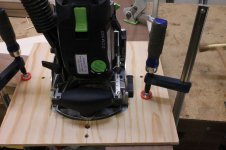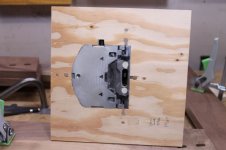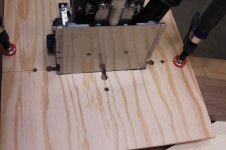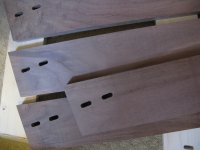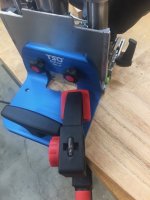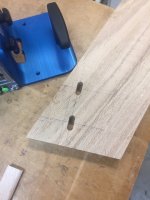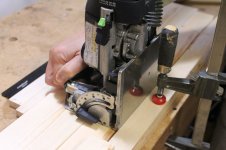Good enough is not enough when I need dead-on mortising results. No matter how steady you can hold the DJ, it is a huge challenge to use the intersecting-lines method to mill mortises freehand.
My solution is to encase the joiner in a platform, position the platform in place (using the intersecting lines (milled flats and centre line on the baseplate)), and clamp the platform on the workpiece. 99%+ precision results possible, with no movement due to vibration during mortising. By the way, the DF500 switch is a lousy design, and it should be replaced with a more user-friendly switch found in any brand of routers.
Would any vendor (Seneca, TSO or Woodpeckers?) consider making an improved version of such a jig?
My solution is to encase the joiner in a platform, position the platform in place (using the intersecting lines (milled flats and centre line on the baseplate)), and clamp the platform on the workpiece. 99%+ precision results possible, with no movement due to vibration during mortising. By the way, the DF500 switch is a lousy design, and it should be replaced with a more user-friendly switch found in any brand of routers.
Would any vendor (Seneca, TSO or Woodpeckers?) consider making an improved version of such a jig?

